
COOKING A STEAK, THE NEW YORK WAY
Texas chef John Tesar shares the secret to cooking a perfect steak.
John Tesar got his first taste of a perfectly cooked steak at the age of 10 in an old-school American chophouse by the name of Part I in Kew Gardens, Queens.
Growing up in New York, his dad was a banker, and according to John, one of his clients was the mob.
“It was a weird, Goodfellas time,” he says today. “Dad knew everybody, and this was like the he-man place to hang out. One Friday night, he took the family out to dinner there, and to this day, I’ll never forget the taste of a steak done under a broiler like that. The aggressive heat, the melting fat, the smell of it all—until I had Knife, I’d never been able to capture that aroma. It was romantic. It changed my life.”
Since then, the now-celebrity chef has honed his mastery of meat into a more than 20-year career, garnering four James Beard semifinalist nods, two Top Chef runs, and, after relocating to Texas in the early 2000s, a growing empire of acclaimed steakhouses (and burger joints) that have stemmed out of his aforementioned pièce de résistance, Knife, in Dallas, where he serves more than a dozen cuts.
Today, he uses little more than salt, pepper, a splash of canola oil, and a cast-iron pan to cook most of his famed steaks. “You can cook one over a grill or a live fire, but out of respect for the animal, the best advice is to use a cast-iron,” he says. “The danger of cooking steak over a live fire is that most people will burn the living bejesus out of it, while the thing about cast iron is that it’s typically used on gas—you have absolute control over the flame, the temperature, and the pan, simultaneously.”
Serving more than a thousand steaks a week, he also appreciates the consistency of cast iron, allowing him to easily transfer the entire operation into the oven to finish two-inch-thick rib eyes or sirloins, as he often does with the Lili.
“Stainless steel doesn’t give you the same evenness of heat or ability to hold it,” he says. “Nor does copper—plus they’re expensive, they can dent, and they need to be polished. With a cast iron, you just rinse it out, rub it with a little oil, and hang it back on your pot rack.”
That heat control is essential, he says, to developing a steak’s Maillard. Why does chicken taste so much better grilled than poached? Or potatoes roasted than boiled? Or vegetables stir-fried than steamed? Maillard, that’s why—a seemingly simple but rather complicated set of chemical reactions that take place as food is cooked. When browning a steak, proteins and sugars are changed by heat and time, affecting not just the color of the meat but also, most importantly, the complexity of its flavor and aroma.
That life-changing smell that so enamored John all those years ago in the heart of Queens? A good cut of meat and a well-executed Maillard. Besides the broiler, he says, “the only other way to obtain that is with a cast-iron pan.” Anything else, fuhgeddaboudit.
About Chef John Tesar

Never one to shy away from controversy or the limelight, renown Chef John Tesar’s life choices are just as daring and bold as his cuisine. The four-time James Beard “Best Southwest Chef” semifinalist and “Top Chef” contestant specializes in modern American cuisine prepared with authentic European techniques, served up to his legion of fans who flock to his Dallas-based steakhouse – Knife. Tesar’s no-nonsense personality and sharp culinary perspective have garnered high-profile acclaim throughout his 20+ year career including national nods from Esquire (named to “Best New Restaurants” for two consecutive years), Food & Wine, New York Magazine, The New York Times, appearances on “The Today Show,” “The Early Show” and winning the inaugural season of the Food Network’s “Extreme Chef.”
Tesar opened Knife, located at the Highland Dallas hotel, to critical acclaim in May 2014. A reinvention of the steakhouse experience, the chef-driven restaurant features all-natural born and raised Texas beef, pork and lamb in dry-aged prime cuts and specialty cuts such as chuck flap, beef tongue and Akaushi beef. Named one of Eater National’s “Most Anticipated Openings,” Esquire magazine’s “Best New Restaurants,” Zagat’s “Hottest New Restaurants,” Maxim’s “America’s Best Steakhouse Specialties,” D Magazine’s “Best Steakhouse in Dallas” 2015 and 2016 and featured on Esquire Network’s “Restaurant Revolution,” Knife is Tesar’s revolutionary steakhouse vision realized.



